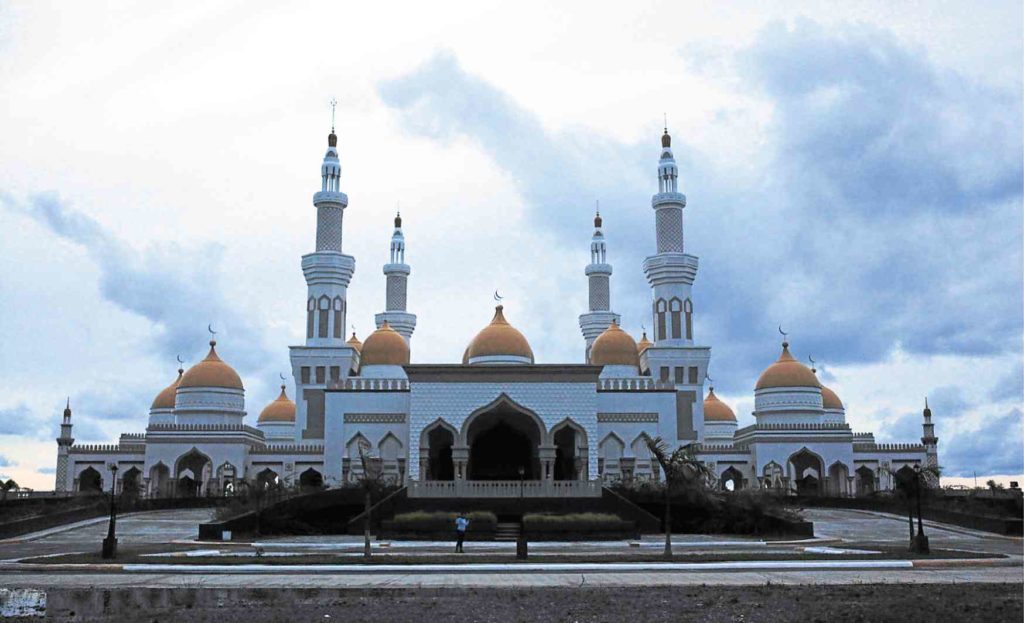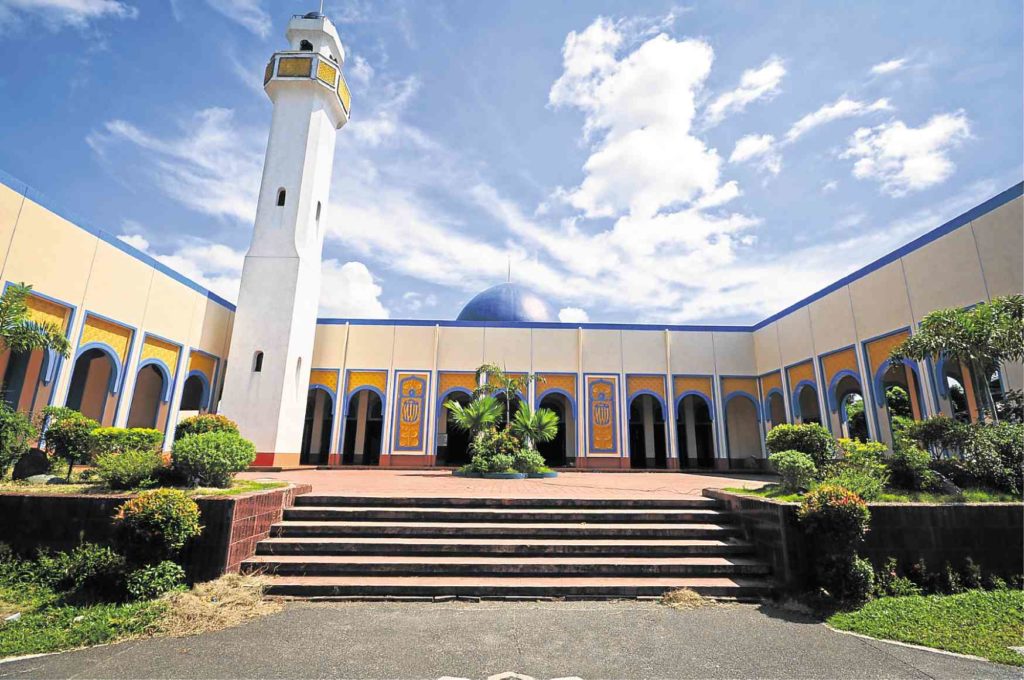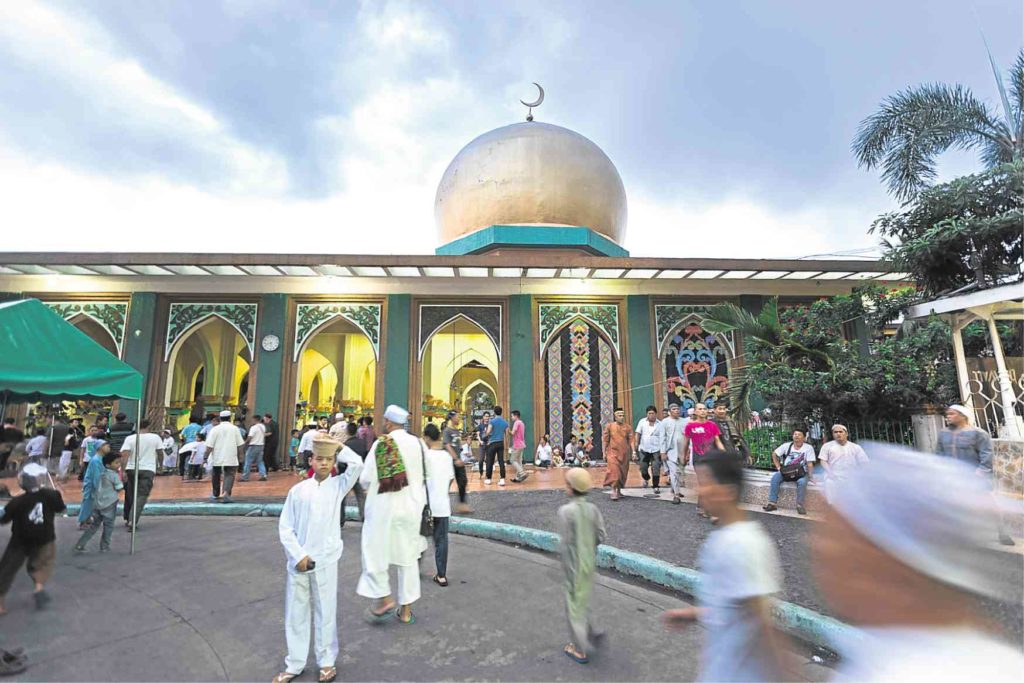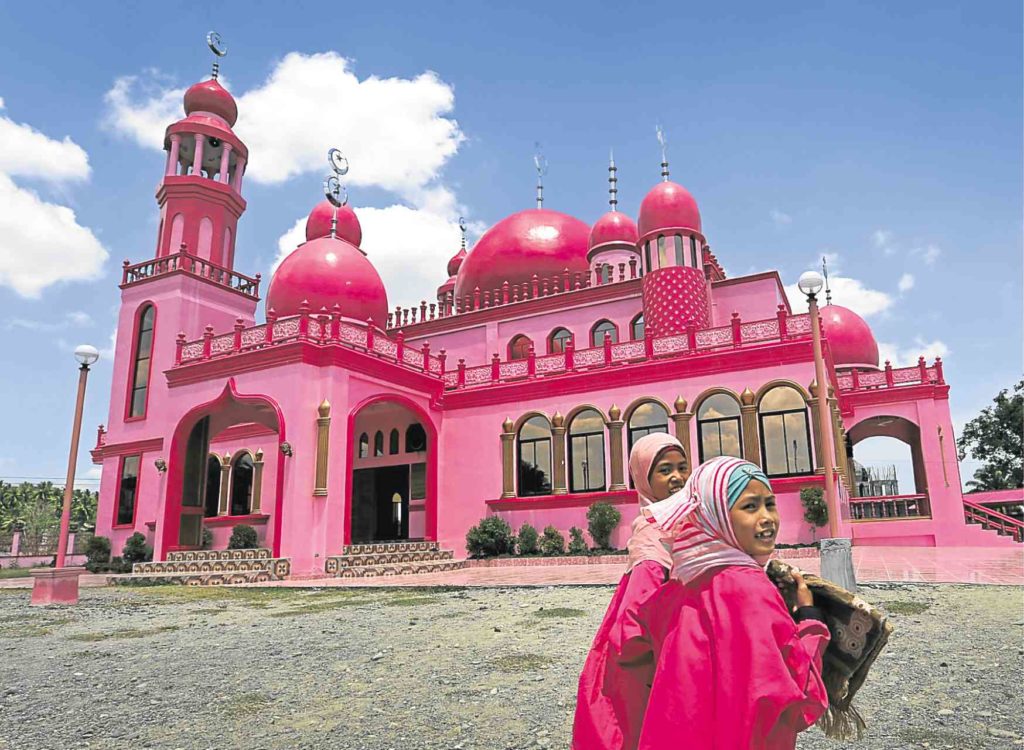A symbol of faith

Bolkiah Masjid
(Editor’s note: We are featuring some of the country’s famed mosques as we celebrate with our Muslim brothers the Islamic festival Eid al-Adha, also called the “Sacrifice Feast”.)
A mosque is considered the center of political, religious and social life of the Muslim people. In the Philippines, the rise of Muslim community was marked by the construction of mosques in Mindanao in the 14th century.
It is assumed that the establishment of mosques signified the acceptance of the Islamic faith of the community leader.
Before the establishment of the Sulu sultanate—the first centralized Muslim government—in 1450, the country’s oldest mosque was built at the Simunul town in Tawi-Tawi province in 1380.
The 637-year-old Sheikh Karimul Makhdum mosque was named after the Arab missionary who had set foot in the town. Only the four pillars made from ipil had remained from the original structure after a series of renovations.
Meanwhile, the Grand Mosque at the seaside village of Inawan, Cotabato City is the country’s biggest to date, which can accommodate 15,000 people.
It was formally named Sultan Hassanal Bolkiah Masjid, after the incumbent Brunei sultan who funded its construction in 2008 at a cost of $48 million. The five-hectare land where it is situated was donated by the family of former Maguindanao Rep. Didagen Dilangalen.
The Grand Mosque symbolizes the best expression of the Muslim faith in the country and the aspirations of a long-neglected region, said the designer, architect Felino Palafox Jr.

Blue mosque (from taguig.gov.ph)
“Our inspiration is our own aspiration for interfaith unity in the country and our Muslim brothers. We hope that the masjid will stimulate economic growth and development in Mindanao,” Palafox said in a previous interview with Inquirer.
In Metro Manila, one of the largest mosques is the Masjid Al-Dahab (The Golden Mosque) in Quiapo district.
Then First Lady Imelda Marcos commissioned its construction in 1976 in time for the planned visit of former Libyan President Muammar el-Qaddafi, who was to help facilitate talks between the government and a Muslim rebel group in Mindanao. The construction was completed even if the latter’s trip did not materialize.

Golden mosque
Another iconic mosque is the Masjid Dimaukom at Datu Saudi Ampatuan town in Maguindanao province which was painted pink. Built in 2014, it was funded by the late town Mayor Samsudin Dimaukom, who was known for his fondness of the said color.
“Pink is the color of love and peace,” Dimaukom, a self-made millionaire, was quoted as saying. “That’s what’s needed in a region wracked by a decades-long Moro insurgency.”

Pink mosque
Another intricate mosque is the Blue Mosque at Maharlika village in Taguig City, which has been used as a socio-civic meeting place for both Filipino and foreign Muslims.
In the Islamic City of Marawi, the green-colored King Faisal Mosque is located inside the campus of Mindanao State University. It was named after its donor, the late king of Saudi Arabia.
Most of Philippine mosques have the basic features of minaret, dome and prayer-niche.
While some minaret (tall, slender tower with balcony) are not functional like those in other Muslim countries, the muezzin (one who calls prayer) stands in the prayer-niche instead to announce the azan (call to prayer).
Some mosques have separate entrances for males and females while some have common entrances for both sexes. Inside, women usually stay at the back of the men during worship.
Some local mosques also do not have a sahn (courtyard) like those found in Middle East. Benches are instead situated outside where Muslims can wait for the next prayer.
During prayers, all Muslims around the world face towards the direction of Kaaba, a cube-shaped edifice located at the center of Islam’s most sacred mosque at Mecca in Saudi Arabia.
While inside the mosque, Muslims feel the sovereignty of Allah as they are in a state of spiritual discipline.
Source: ncca.gov.ph, pulitzercenter.org, taguig.gov.ph, msumain.edu.ph and Inquirer Archives
